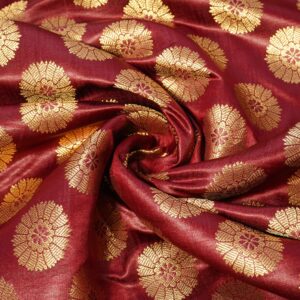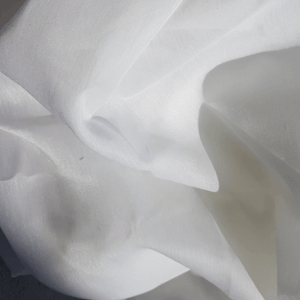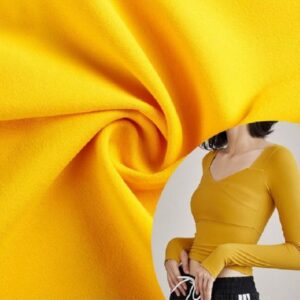Can You Mix Jacquard with Synthetic Microfiber Fabric?
Fabric compatibility is crucial in fashion and sewing, as it influences the final product’s appearance, durability, and comfort. Mixing jacquard with synthetic microfiber can be a creative endeavor, offering unique design possibilities. This article will explore the compatibility of these fabrics, their benefits, challenges, and practical sewing tips.
Compatibility Analysis
Yes, you can mix jacquard with synthetic microfiber. These fabrics can complement each other when used thoughtfully. The key is understanding their properties and how they interact. Jacquard, known for its intricate patterns and textured surface, pairs well with the sleek and smooth nature of synthetic microfiber. However, factors like texture, weight, care requirements, and durability must be considered.
Key Factors
- Texture and Weight: Jacquard is typically heavier and more textured, while microfiber is lightweight and smooth. Balancing these can create visual interest.
- Stretch and Elasticity: Microfiber often has more stretch, which can add flexibility to designs using stiff jacquard.
- Care Requirements: Both fabrics have distinct care instructions, making it essential to find a middle ground for maintenance.
- Durability: Both fabrics are durable, but microfiber’s resistance to wear and tear can enhance jacquard’s longevity.
Fabric Properties Comparison Table
| Property | Jacquard | Synthetic Microfiber |
|---|---|---|
| Fiber Content | Natural (cotton, silk) or synthetic | Synthetic (polyester, nylon) |
| Weight and Thickness | Medium to heavy | Light to medium |
| Breathability | Moderate | High |
| Stretch and Elasticity | Low | High |
| Wrinkle Resistance | Moderate | High |
| Care Instructions | Hand wash or dry clean | Machine wash, low heat |
| Durability | High | Very high |
Benefits of Mixing These Fabrics
- Enhanced Texture and Visual Interest: The contrast between jacquard’s texture and microfiber’s smoothness can create dynamic designs.
- Improved Comfort and Performance: Microfiber adds stretch and breathability, enhancing comfort.
- Better Drape and Movement: Combining these fabrics can improve the garment’s flow and fit.
- Cost-Effectiveness: Microfiber is generally affordable, offsetting the cost of more expensive jacquard.
- Seasonal Versatility: This combination works well for both warm and cool climates.
- Design Possibilities: Mixing these fabrics offers endless creative opportunities in both fashion and home decor.
Potential Challenges
- Different Shrinkage Rates: Pre-wash fabrics to minimize shrinkage issues.
- Conflicting Care Requirements: Opt for a unified care routine that suits both fabrics.
- Texture Clash or Pilling: Use a fabric conditioner to reduce friction.
- Seam Puckering: Use appropriate needles and thread to maintain seam integrity.
- Color Bleeding or Fading: Test for colorfastness before combining fabrics.
Practical Solutions
- Use a serger for seam finishing to prevent fraying.
- Select patterns that accommodate different fabric weights.
- Employ interfacing to stabilize areas prone to puckering.
Sewing & Styling Tips
- Best Sewing Techniques: Use a zigzag stitch for flexibility.
- Needle and Thread Recommendations: Use a universal needle (size 80/12) and polyester thread.
- Interfacing and Stabilizer Needs: Lightweight interfacing can support jacquard.
- Seam Finishing Methods: Consider French seams for a clean finish.
- Pattern Selection Advice: Choose patterns that highlight both fabrics’ strengths.
- Styling Ideas: Use jacquard for structured parts and microfiber for flowing sections.
Care & Maintenance Guide
- Washing Instructions: Use cold water and a gentle cycle.
- Drying Recommendations: Air dry or tumble dry on low heat.
- Ironing and Steaming Tips: Use low heat for microfiber and medium heat for jacquard.
- Stain Removal: Spot clean with mild detergent.
- Long-Term Care: Store in a cool, dry place to prevent damage.
FAQ Section
- Can you wash jacquard and microfiber together? Yes, use cold water and a gentle cycle.
- Will jacquard shrink more than microfiber? Jacquard may shrink slightly; pre-wash to minimize this.
- What needle size should I use for sewing these fabrics together? A universal needle size 80/12 is recommended.
- Can you mix jacquard and microfiber in one garment? Absolutely, they can complement each other beautifully.
- How do you prevent seam puckering when combining these fabrics? Use a zigzag stitch and adjust tension settings.
- Is it okay to mix jacquard and microfiber for upholstery? Yes, but ensure the fabrics are durable enough for the intended use.
- What’s the best way to finish seams with these fabrics? French seams or serging are effective methods.
By understanding the properties and compatibility of jacquard and synthetic microfiber, you can create stunning, durable, and versatile pieces that stand out in both fashion and home decor.



Leave a Reply